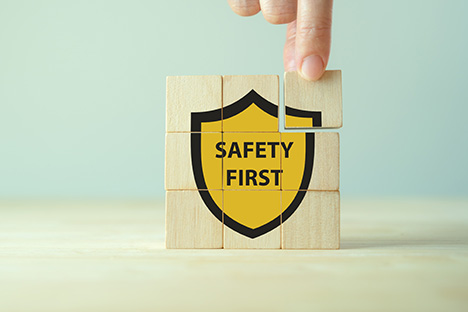I just returned from an incredible two weeks in Ireland with Oxford Club Members on the Club’s Wealth, Wine & Wander Retreat.
Ireland’s natural beauty is legendary and lived up to its billing. The cities were lively and fun, and the Irish were generous with their spirit.
One of my favorite parts of the trip was getting to know the Oxford Club Members and hearing their stories.
They were inspiring tales of success…
- The 90-something-year-old who was a top salesperson for The New York Times in the 1950s but wasn’t promoted because she was a woman. She eventually left and ran her own advertising agency.
- The former top engineer from Chrysler, who regularly met with Lee Iacocca. His eyes lit up when he talked about cars, especially when the hotel we stayed at had one of the very first cars ever produced.
- The entrepreneur who opened up a pizza place that became a chain, which he sold. A few years later, that chain became Godfather’s Pizza. He still runs multiple restaurants today.
All of the people I met were self-made. More impressively, though they had big successes in life, they also worked hard in their careers and invested their money the right way, affording them the lifestyles they have now.
Many of them told me they follow my 10-11-12 System of investing in Perpetual Dividend Raisers (companies that raise their dividends every year). They weren’t banking on catching the next hot stock.
You may be lucky and discover the next Tesla (Nasdaq: TSLA) or Amazon (Nasdaq: AMZN). But more likely, you’ll wind up in the next Lucid (Nasdaq: LCID).
That’s not a jab at your investing ability. It’s just that there is often a lot of hype about stocks that don’t work out, so those big winners are rare.
Here’s how I run my stock portfolio…
I do take a few small shots at stocks that could be big winners. But if they flame out, it won’t hurt me badly because I keep my position sizes small and use 25% trailing stops.
The rest of my portfolio is invested in Perpetual Dividend Raisers. I want to own stocks that generally yield 3.5% or more, grow their dividend by a meaningful amount every year, and generate plenty of cash flow to be able to afford and raise the dividend.
Because I have a number of years until retirement, I reinvest the dividends, which compounds my wealth. This was the secret that many of the Members on the trip utilized.
For those of you who are unfamiliar with the concept, it goes like this: When a company pays dividends, you can collect the dividends in cash or automatically buy more shares of stock.
For example, Ally Financial (NYSE: ALLY) pays a $0.30 per share quarterly dividend for a yield of 4.3%. If you bought 200 shares at $27.77 (the price as I write this), this quarter, you’d get paid $60 in dividends ($0.30 dividend x 200 shares = $60). If you reinvested the dividend, you’d automatically buy 2.16 more shares based on the same price ($60 dividends / $27.77 share price = 2.16). Of course, the price could be higher or lower. If it was lower, you’d buy more shares, which would generate more dividends.
The next quarter, if the dividend was the same, you’d get paid $60.64, which automatically would be used to buy more shares. That additional $0.64 seems like nothing, but if Ally raised the dividend at just half the pace it’s been raised at over the last seven years, your original $5,554 investment would nearly double to $10,102 in five years. That’s if the stock simply kept pace with the historical average of the S&P 500. In other words, it wasn’t a world-beater. Just an average stock with a strong yield and terrific dividend growth.
Here’s what that original investment would be worth over various periods of time.

You can see that after just 10 years, your investment would be up 3 1/2 times. It would double again in another five years to give you nearly seven times your original investment.
Each additional five years would nearly double the nest egg again. After 30 years, you would’ve made more than 53 times your money – not by chasing the next home run but instead by owning a “boring” dividend stock.
Many of the Members on our trip invested according to this strategy. And it helped them afford a stay at Adare Manor, our last stop in Ireland (photo below). It was rated Condé Nast’s top resort in the world.

There is nothing boring about that.
